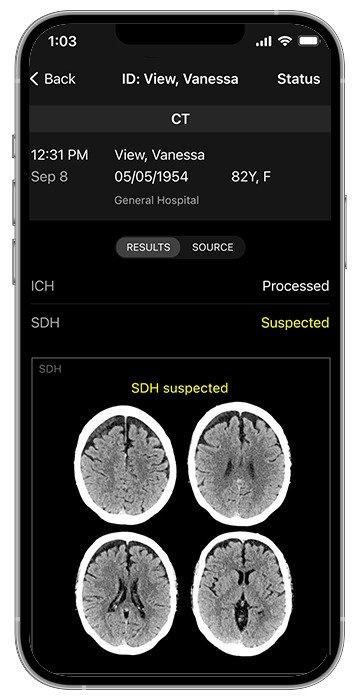RapidAI is showing no signs of slowing down after racking up a trio of FDA clearances since the start of the year.
The latest of the agency nods was bestowed upon an artificial intelligence-powered module that’s designed to spot signs of possible subdural hematomas in non-contrast CT scans of the brain.
The FDA clearance of Rapid SDH, announced by RapidAI on Thursday, makes the module available to hospitals in the U.S., where cases of subdural hematoma current carry a mortality rate between 40% and 60% and are expected to grow in prevalence by almost 80% within the next 20 years, according to the company.
Rapid SDH’s AI was trained using hundreds of previous patient scans to spot potential indicators of both acute and chronic subdural hematomas, in which blood builds up between the surface of the brain and its protective cover.

Studies of the module have proven it to have sensitivity of 93% and specificity of 99% in identifying possible brain bleeds, adding up to a positive predictive value of 99%, per RapidAI.
According to its maker, the technology can scan a brain CT scan and return its results to doctors within one minute. Those results come through via the RapidAI mobile app, emails and a hospital’s existing picture archiving and communication system (PACS), allowing every member of a trauma team to view the scan, assess the findings themselves and begin remotely triaging the patient’s case if needed.
Rapid SDH can be used alongside additional AI-powered modules from RapidAI trained to catch signs of intracranial hemorrhage and hyper-dense areas of the brain, dubbed Rapid ICH and Rapid Hyperdensity, respectively.
RapidAI’s aim with the three-in-one solution is to help hospitals speed up the process of assessing potential cases of traumatic brain injury and hemorrhagic stroke and begin treating diagnosed patients as quickly as possible.
“The FDA’s clearance of Rapid SDH significantly enhances our expanding range of hemorrhagic and trauma care solutions at this crucial time of rapidly growing patient numbers, clinician shortages and advancements in potential treatment options,” Amit Phadnis, the company’s technology chief, said in this week’s announcement.
“Our goal is to continue to expand the capabilities and applications of our deep AI to deliver comprehensive clinical solutions that provide care teams with the crucial insights necessary to evaluate patients, streamline decision making and expedite care for this common and dangerous disease,” Phadnis continued.